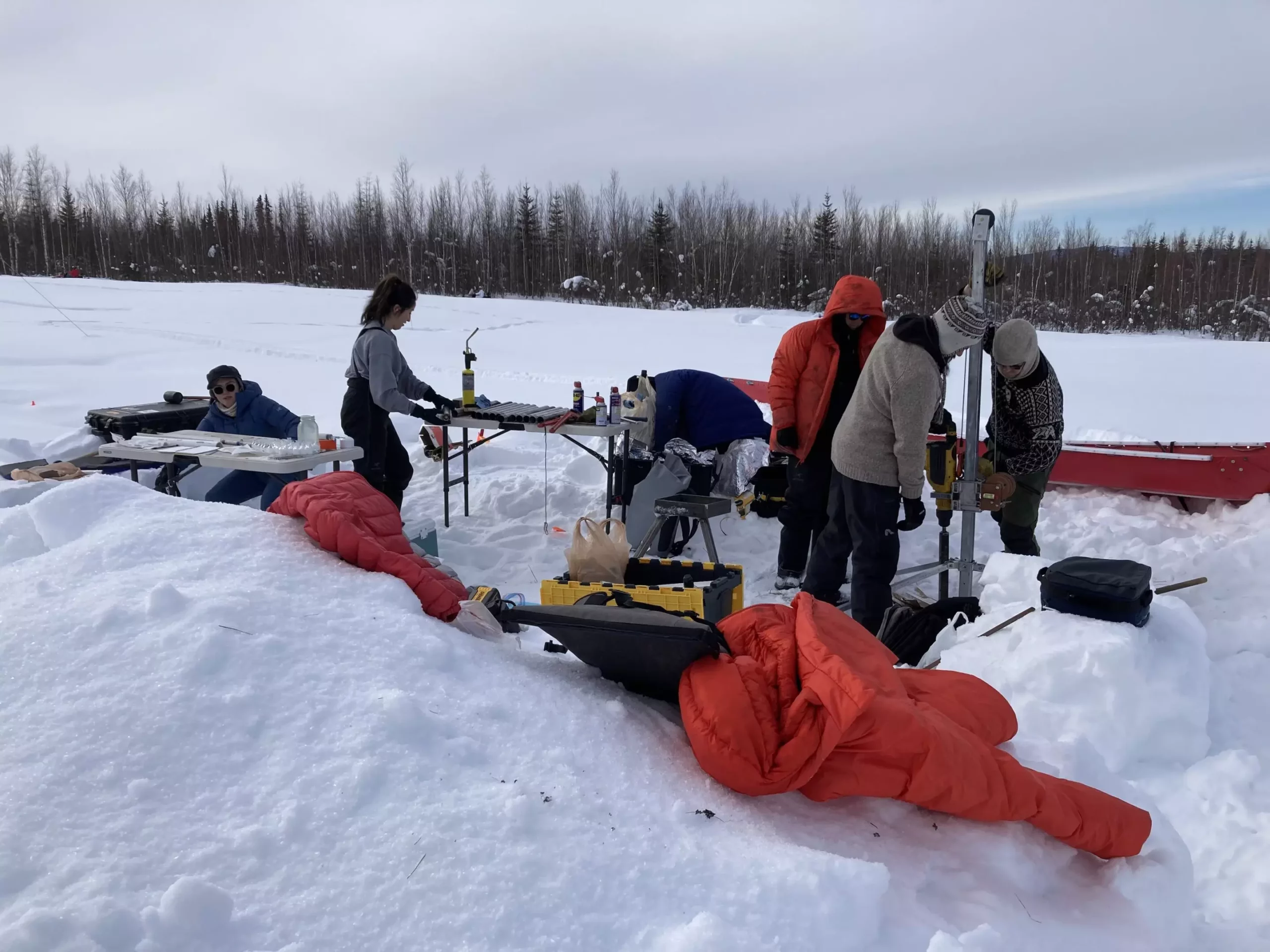In the snowy expanse of Fairbanks, Alaska, an unsettling revelation is brewing beneath the surface. When Katey Walter Anthony, a limnologist based at the University of Alaska Fairbanks, first encountered the rumors of methane, a powerful greenhouse gas, accumulating under community lawns, she was understandably skeptical. “I ignored it for years,” she said, believing her expertise lay solely with lakes. However, as local residents ignited the so-called “turf bubbles” and confirmed the presence of methane gas, Walter Anthony’s interest was piqued. Venturing beyond golf courses into the surrounding forests of birch and spruce, she observed something more alarming: significant methane emissions were bubbling up through the ground.
This experience sparked a deeper inquiry into the upland ecosystems of Interior and Arctic Alaska. The potential ramifications of this discovery led Walter Anthony and her team, with support from the National Science Foundation, to embark on an ambitious study exploring methane emissions across this unique biogeographical region. Their findings, published in the journal Nature Communications, unveiled that upland landscapes exhibited some of the highest recorded methane emissions for northern terrestrial ecosystems, reshaping both local and global perceptions of methane sources.
Traditionally, methane emissions have been predominantly associated with wetlands, where stagnant, waterlogged soils create low oxygen conditions conducive to the activity of methane-producing microbes. The current study, however, bursts this bubble—literally and figuratively. Walter Anthony’s research indicates that drier, well-drained areas are emitting levels of methane that can surpass those typically seen in wetlands, especially during winter months. In some instances, winter emissions were found to be five times higher than those produced by northern wetlands. This presents a sobering update to climate models that have largely underestimated the potential for upland ecosystems to release methane.
Walter Anthony’s skepticism motivated her to validate these findings comprehensively. The research team identified an impressive 25 sites across Alaska’s dry upland terrains, including forests, grasslands, and tundra. Over three years, they meticulously measured methane flux at more than 1,200 locations, revealing that nearly all sites were contributing to methane emissions. This expansive effort underscores the urgency of this research and its implications for understanding carbon dynamics in a warming Arctic.
Central to this alarming discovery are the geophysical characteristics of the landscape, particularly features like thermokarst mounds and taliks. These unique geological formations occur when thawing permafrost causes land to subside into conical hills and sunken troughs. The presence of taliks—perennially unfrozen pockets of soil—plays a crucial role in methane emissions. These pockets allow microbial life to remain active year-round, leading to the decomposition of organic material and subsequent methane production.
The study raises a significant alarm regarding Yedoma deposits, which represent ancient permafrost soils rich in carbon that can extend deep beneath the surface. Despite covering only a small fraction of the permafrost area, they harbor a staggering amount of carbon—over 25% of the total carbon inventory. Walter Anthony notes that the high silt content in these soils limits oxygen diffusion, creating an ideal environment for methane-generating microbes to thrive.
The ramifications of these findings extend beyond local ecosystems; they suggest a potentially larger global concern regarding the permafrost carbon feedback loop. As climate change accelerates, the research indicates that thermokarst mounds and the corresponding taliks will proliferate throughout the Arctic region, especially the Yedoma domains. By the 22nd century, these landscapes are projected to significantly influence methane emissions.
Walter Anthony succinctly expresses the overarching concern: “Everywhere you have upland Yedoma that forms a talik, we can expect a strong source of methane, especially in the winter.” This conclusion emphasizes a critical need for the scientific community to rethink existing frameworks for predicting greenhouse gas emissions. The potential for increased methane production in upland ecosystems is now a pressing issue, fundamentally shifting our understanding of climate feedback mechanisms.
As the ice melts and the Arctic warms, it becomes increasingly vital to undertake nuanced and comprehensive research into the mechanics of greenhouse gas emissions. Walter Anthony’s pioneering study reveals the unexpected potency of upland ecosystems in contributing to methane emissions, particularly through ancient carbon-rich soils. As a result, there is an urgent necessity for more informed strategies in climate change mitigation that account for these newfound realities. Only through continued research, awareness, and global collaboration can we hope to address the expanding challenges posed by climate change and its impact on our planet’s future.


Leave a Reply